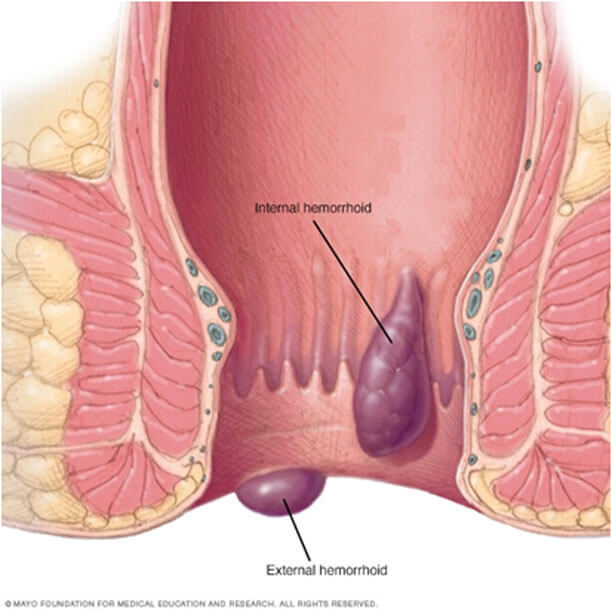The presence of submucosal tuft of blood vessels cushion is normal and helps in the continence mechanism
Hemorrhoids (piles) are swelling and engorgement of these blood vessels. When they originate inside the rectum they are termed as internal hemorrhoids and when they develop under the skin around the anus, they are called external hemorrhoids. Even though internal hemorrhoids develop within the anal canal (Grade I & II), with time they will start prolapsing out of the anal canal and patients push them inside manually (Grade III). Rarely prolapsed internal hemorrhoids get swollen and not reducible inside even with effort (Grade IV). Internal hemorrhoids often cause painless bleeding at the onset of defecation. Chronic blood loss can cause anemia (low hemoglobin state). External hemorrhoids are one of the most painful conditions affecting anal canal and patients often find it difficult to sit. Blood vessel gets ruptured and clot formation near the anal verge is the cause of pain.


Treatment of piles depends on the stage and type. Constipation should be avoided by taking a high fiber diet, adequate liquid intake and mediations if required. A topical ointment may be useful. Evacuation of blood clots/ Surgical removal is required to relieve the pain quickly in case of external hemorrhoids.



Our gastroenterology services treat all kinds of digestive system disorders. Book an appointment now with our GI Specialists and have the best team of doctors treating you!